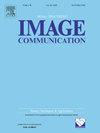Active contour model based on pre- additive bias field fitting image
IF 2.7
3区 工程技术
Q2 ENGINEERING, ELECTRICAL & ELECTRONIC
引用次数: 0
Abstract
With regards to figure with inhomogeneous intensity, the models based on active contour model have been widely used. Compared with the classic models, this paper proposes an optimized additive model which contains the edge structure and inhomogeneous components. Second, by introducing a novel clustering criterion, the value of the bias field can be estimated before iteration, greatly speeding the evloving process and reducing the calculation cost. Thus, an improved energy function is drawn out. Considering the gradient descent flow formula, a novel error function and adaptive parameter are utilized to improve the performance of the data term. Finally, the proposed regularization terms ensure the evloving process is more efficient and accurate. Owing to the above mentioned improvements, the proposed model in this paper has excellent performance of the segmentation in terms of robustness, effectiveness and accuracy.
基于预加性偏场拟合图像的主动轮廓模型
对于强度不均匀的图形,基于活动轮廓模型的模型得到了广泛的应用。与经典模型相比,本文提出了一种包含边缘结构和非均匀成分的优化加性模型。其次,通过引入一种新的聚类准则,可以在迭代之前估计出偏差场的值,大大加快了进化过程,降低了计算成本;由此,提出了一种改进的能量函数。考虑梯度下降流公式,采用新的误差函数和自适应参数来提高数据项的性能。最后,提出的正则化项保证了演化过程的效率和准确性。由于上述改进,本文提出的模型在鲁棒性、有效性和准确性方面具有优异的分割性能。
本文章由计算机程序翻译,如有差异,请以英文原文为准。
求助全文
约1分钟内获得全文
求助全文
来源期刊

Signal Processing-Image Communication
工程技术-工程:电子与电气
CiteScore
8.40
自引率
2.90%
发文量
138
审稿时长
5.2 months
期刊介绍:
Signal Processing: Image Communication is an international journal for the development of the theory and practice of image communication. Its primary objectives are the following:
To present a forum for the advancement of theory and practice of image communication.
To stimulate cross-fertilization between areas similar in nature which have traditionally been separated, for example, various aspects of visual communications and information systems.
To contribute to a rapid information exchange between the industrial and academic environments.
The editorial policy and the technical content of the journal are the responsibility of the Editor-in-Chief, the Area Editors and the Advisory Editors. The Journal is self-supporting from subscription income and contains a minimum amount of advertisements. Advertisements are subject to the prior approval of the Editor-in-Chief. The journal welcomes contributions from every country in the world.
Signal Processing: Image Communication publishes articles relating to aspects of the design, implementation and use of image communication systems. The journal features original research work, tutorial and review articles, and accounts of practical developments.
Subjects of interest include image/video coding, 3D video representations and compression, 3D graphics and animation compression, HDTV and 3DTV systems, video adaptation, video over IP, peer-to-peer video networking, interactive visual communication, multi-user video conferencing, wireless video broadcasting and communication, visual surveillance, 2D and 3D image/video quality measures, pre/post processing, video restoration and super-resolution, multi-camera video analysis, motion analysis, content-based image/video indexing and retrieval, face and gesture processing, video synthesis, 2D and 3D image/video acquisition and display technologies, architectures for image/video processing and communication.
 求助内容:
求助内容: 应助结果提醒方式:
应助结果提醒方式:


